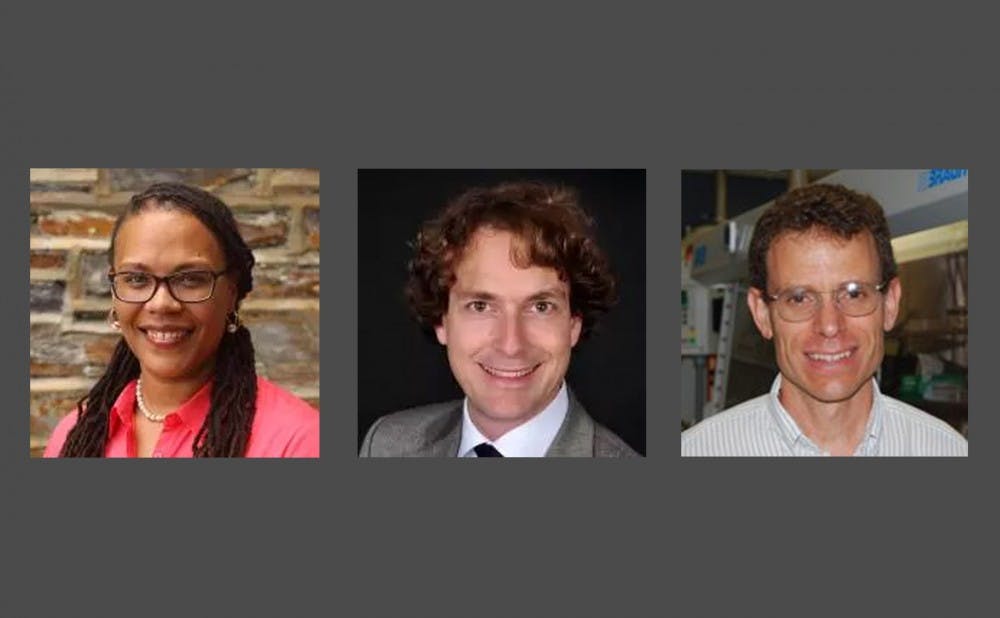Though solar power offers a promising future for sustainable energy, it remains relatively costly and impractical, something three three Duke professors hope to change.
The faculty members, along with 13 researchers from other universities, have been selected to form the Center for Hybrid Organic-Inorganic Semiconductors for Energy. The group is a new Department of Energy initiative to study the potential of these semiconductors in sustainable energy and beyond.
David Mitzi, the Simon Family Professor of Mechanical Engineering and Materials Science; Adrienne Stiff-Roberts, professor of electrical and computer engineering; and Volker Blum, associate professor of mechanical engineering and materials science, are at the helm of studying the hybrid semiconductors, which are special for their unique composition of both organic and inorganic materials.
“Our first and foremost goal is to understand the fundamental physics behind how these materials work, and the reason that’s important is because it can establish these types of hybrid materials as a new semiconductor technology,” Stiff-Roberts said.
The scientists hope to fine-tune these materials through their key properties of spin, charge and light, eventually creating powerful uses for LEDs and other electronics.
“The primary goal that researchers are working towards is a practical alternative to traditional energy technologies,” Mitzi said. “The key thing people care about is cost per unit performance.”
In search of more cost-efficient materials, Mitzi and his team have focused their efforts on understanding perovskites. The hybrid semiconductor material “demonstrate[s] orders of magnitude better absorption characteristics” with less material and at a lower cost than silicon, the dominant material in solar energy technology today.
Reflecting on her journey in the materials science field, Stiff-Roberts said that Duke’s interdisciplinary learning environment was key to her success.
“The biggest thing about Duke that helped make this possible is just the ability to collaborate across different departments,” she said. “That atmosphere of collaboration and multidisciplinarity really planted the seed for this project moving forward."
For Mitzi, this project is the culmination of his lifelong dreams.
“When I was in high school, the thing that really excited me, and the reason why I got into science in the first place, was the thought of designing new energy technologies that are clean and sustainable,” he said.
Get The Chronicle straight to your inbox
Sign up for our weekly newsletter. Cancel at any time.

